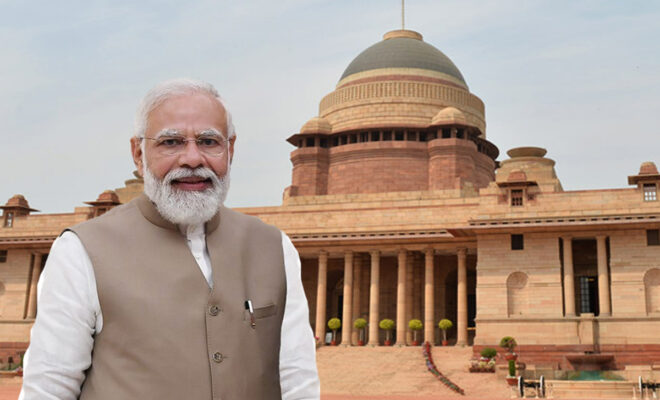How Is The President Of India Elected? (Process In 2022)

The search for the next first citizen (President) of India has been started. But do you want to know How The President Of India Elected? Let’s get the answer!
The 5-year term of President Ram Nath Kovind comes to an end on 24 July 2022. And with that, the ECI has announced the 16th presidential elections on July 18 with results to be declared on July 21.
The Constitutional Law of Article 54
According to Article 54 of the Constitution of India, the President shall be elected by the members of an electoral college consisting of the elected members of both houses of parliament and the elected members of the legislative assemblies of the states.
Also Read: Presidential Election: Who Will Be The Next Indian President?
What Should Be The Value Of The Electoral College?
As per the current estimates, the electoral college consists of:
- 543 Lok Sabha MPs
- 233 Rajya Sabha MPs
- 4,033 state Assembly Members
Total Number of Electors: 4,809
Total Number of Votes: 10,86,431
What Is The Voting Process?
The voting will be done through proportional representation using a single transferable vote system and will be collected through a secret ballot.
Each voting paper will contain two columns:
- Column 1: Name of the candidate
- Column 2: Order of preference
Each elector will have as many preferences as there are contesting candidates.
The Nominations Filing Process
The candidature must be submitted to ECI with the nomination paper having mandatory 50 members of the electoral college to propose the candidate and another 50 seconding the candidature.
The candidates also need to deposit an amount of ₹15,000 as security.
What Are The Eligibility Criteria Of The Presidential Candidates?
- The presidential candidate must be a citizen of India.
- The candidate must have completed 35 years of age.
- A person should not hold any office of profit under the Indian government or the government of any state or under any local or other authority subject to the control of any of the state governments.
The Voting Calculation
As per media reports, due to the lack of a Legislative Assembly in J&K, the value of an MP’s vote is expected to fall to 700 from 708.
In states, the value of the vote of each MLA varies according to the population.
For eg: As per govt data, the value of the vote of each MLA in UP stands at 208, followed by 176 in Jharkhand and Tamil Nadu.
Which Party Will Make The President This Time?
Reportedly, no party has announced its candidate for the upcoming presidential election. Notably, the ruling party has a majority of over 400 MPs.



